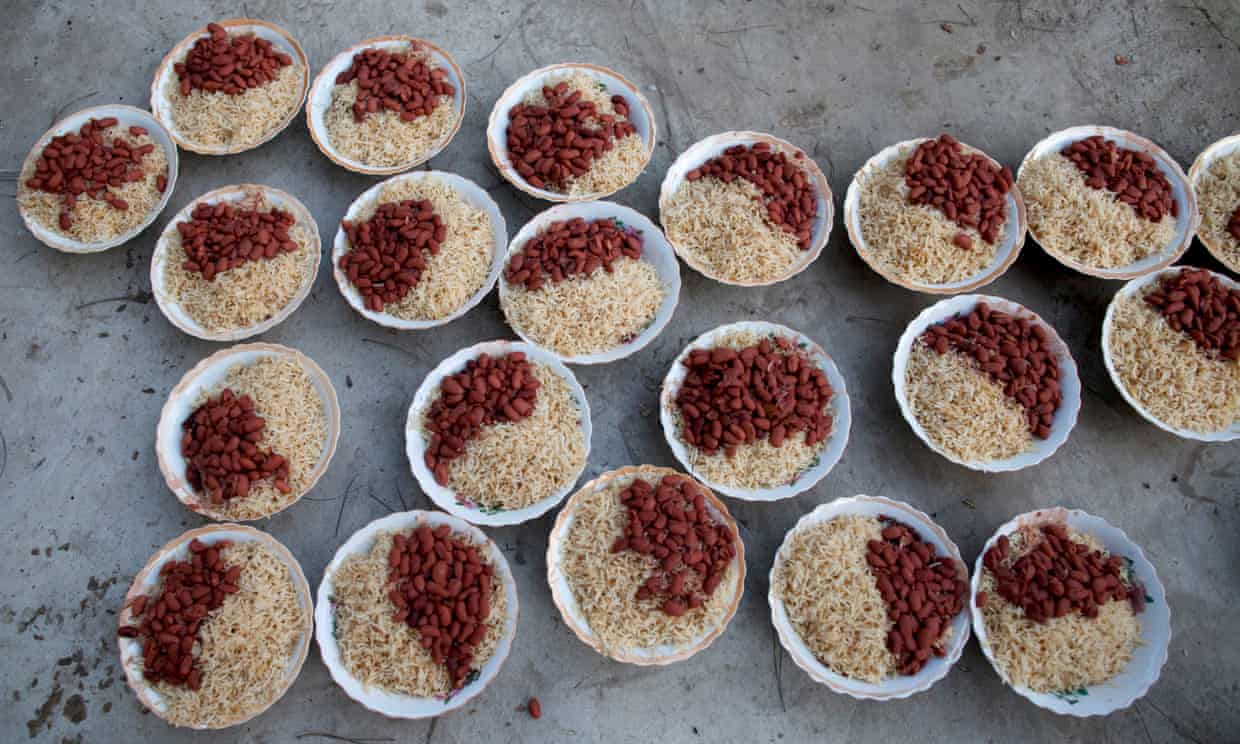by KATE HODAL
 Plates of rice and beans in Kabul, Afghanistan. The World Food Programme report highlights how those in the poorest countries end up paying the most for food, relative to their income. PHOTO/Paula Bronstein/Getty
Plates of rice and beans in Kabul, Afghanistan. The World Food Programme report highlights how those in the poorest countries end up paying the most for food, relative to their income. PHOTO/Paula Bronstein/Getty
Research reveals the stark inequality that drives the global hunger crisis, with the poorest people paying more than they earn in a day for a single meal
The world’s poorest pay more than a day’s wages for a single plate of food, according to a report from the World Food Programme, which reveals that the same bean stew can cost the average consumer in New York just $1.20, while the price tag is more than $320 in South Sudan.
The research, released to coincide with World Food Day on Monday, underlines the sheer discrepancy of consumers’ purchasing power around the world by measuring the relative cost of food in various countries against a single baseline.
“By adjusting for purchasing power, we shine a stark light on inequalities in the affordability of food,” said WFP’s executive director, David Beasley. “The results are, in many cases, staggering: if you thought a meal was expensive in, say, Norway – well, try Malawi.”
Economists at WFP took a standard meal of beans and pulses, paired with a locally preferred carbohydrate such as rice or cassava, priced it on a local scale, then compared it with the average daily budget derived from national GDP per capita figures. Using this as a baseline, WFP was then able to determine how much an average person in New York state would have to pay for the stew if they spent the same proportion of their daily income as people in other countries.
That $1.20 (90p) plate of rice and beans in New York, which is just 0.6% of the New Yorker’s average daily income, costs $8.27 in Guatemala, $27.77 in Nepal, and $72.65 in Haiti.
In South Sudan, the worst-ranking country in the study, the meal costs $321.70, or 155% of a person’s daily wages.
Beasley points to the sheer unaffordability of food – rather than the absence of it – to explain why hunger rages on, particularly in the developing world. Some 795 million people went hungry in 2016, according to WFP, a figure expected to rise this year, due to factors including conflict, political instability, poor infrastructure and climate change.
“Nearly 800 million people went hungry on the planet last year because they simply could not afford to feed themselves, yet we have enough food to feed everyone worldwide: the food we waste could actually feed 2 billion people,” said Francis Mwanza, a London-based spokesperson for the WFP.
“Unless we stop the conflicts, unless we stop the migration of people from their homelands into neighbouring states, unless people have the means to either grow their own food or be able to afford to buy it, people will continue going hungry.”
The Guardian for more
